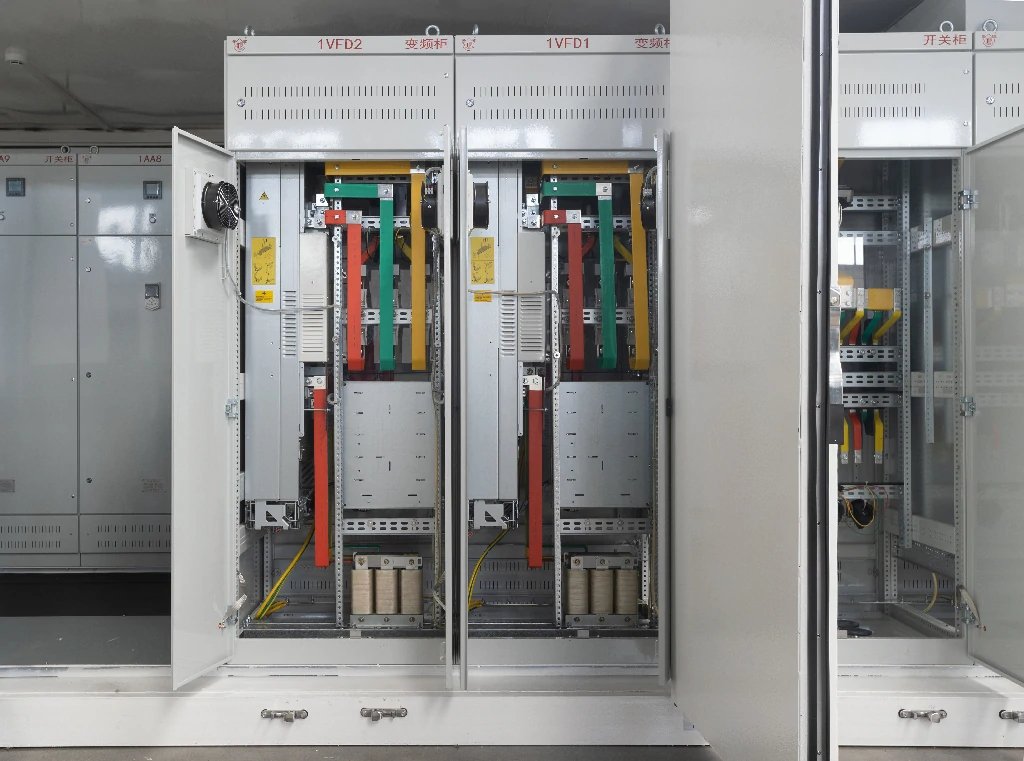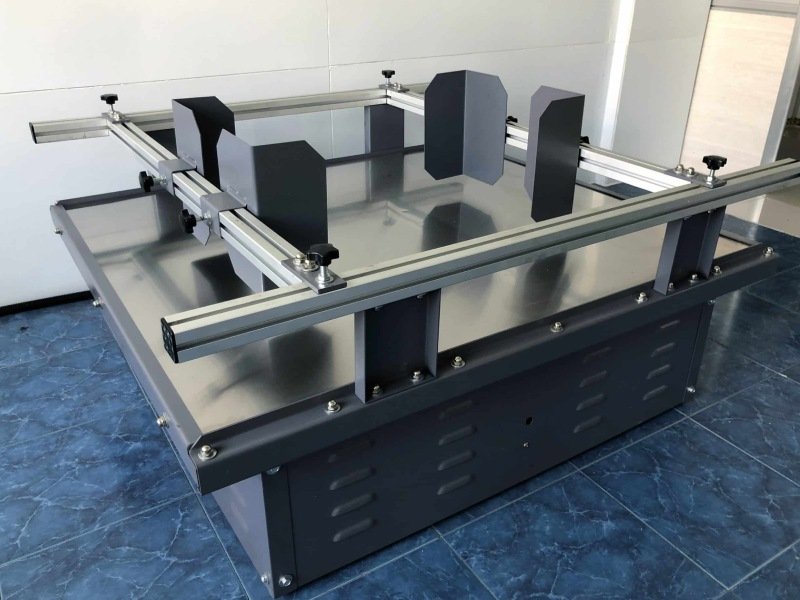High-voltage cabinets house critical electrical components that require secure, reliable, and safe access control. The installation of latches on these cabinets is a critical task that demands precision, adherence to safety standards, and an understanding of the operational environment. This article provides a comprehensive guide to best practices for installing latches on high-voltage cabinets, aimed at engineers involved in design, installation, and maintenance. The focus is on ensuring safety, durability, and compliance with industry standards while addressing practical challenges encountered in the field.
Úvod
High-voltage cabinets, used in applications such as power distribution, renewable energy systems, and industrial facilities, operate at voltages exceeding 1,000 volts AC or 1,500 volts DC, as defined by standards like the National Electrical Code (NEC) and International Electrotechnical Commission (IEC). These cabinets require robust latching mechanisms to prevent unauthorized access, protect against environmental hazards, and ensure operational reliability. Improper latch installation can lead to safety risks, equipment damage, or costly downtime. Engineers must consider factors such as material selection, environmental conditions, regulatory compliance, and ease of maintenance when installing latches. This article outlines best practices to guide engineers through the process, from planning to post-installation testing.
1. Understanding Latch Requirements
1.1 Assessing Cabinet Specifications
Before selecting or installing a latch, engineers must thoroughly understand the cabinet’s specifications. Key factors include:
- Voltage Rating: Confirm the cabinet’s operating voltage to ensure the latch can withstand potential arc flash or electrical interference. For example, latches for cabinets operating at 13.8 kV require higher dielectric strength than those for 4.16 kV systems.
- Podmínky prostředí: Evaluate the installation environment (e.g., indoor, outdoor, coastal, or industrial). Outdoor cabinets may require latches with IP65 or higher ratings for protection against dust and water ingress, per IEC 60529.
- Access Control Needs: Determine whether the latch must support key-locking, padlocking, or electronic access control systems to meet security requirements.
- Mechanical Load: Assess the door’s weight and size to ensure the latch can handle the mechanical stress during operation.
1.2 Regulatory and Safety Standards
Compliance with industry standards is non-negotiable. Key standards include:
- NEC (NFPA 70): Requires secure fastening mechanisms to prevent accidental opening during fault conditions.
- IEEE C37.20.2: Specifies requirements for metal-clad switchgear, including latching mechanisms for high-voltage enclosures.
- UL 50E: Governs environmental ratings for enclosures, impacting latch selection for weatherproofing.
- OSHA 1910.303: Mandates that electrical enclosures be securely fastened to prevent unauthorized access.
Engineers should consult the relevant standards based on the project’s jurisdiction and application. For example, European projects may require adherence to EN 62208 for empty enclosures.
2. Selecting the Right Latch
2.1 Material Selection
The latch material must withstand the cabinet’s operational and environmental conditions. Common materials include:
- Nerezová ocel: Ideal for corrosive environments (e.g., coastal or chemical plants) due to its resistance to rust and degradation.
- Pozinkovaná ocel: Suitable for indoor applications with moderate environmental exposure.
- Non-Metallic Composites: Used in environments requiring non-conductive materials to reduce the risk of electrical faults.
For high-voltage applications, avoid materials prone to corrosion or degradation under UV exposure, as these can compromise latch integrity over time.
2.2 Latch Types
Different latch types suit specific applications:
- Compression Latches: Provide a tight seal, ideal for cabinets requiring dust or water resistance. They are commonly used in outdoor high-voltage cabinets.
- Západky vaček: Simple and cost-effective, suitable for indoor cabinets with lower security requirements.
- Multi-Point Latches: Ensure even pressure distribution across large cabinet doors, reducing warping and improving sealing.
- Electronic Latches: Integrate with access control systems for enhanced security, often used in data centers or critical infrastructure.
Select a latch based on the cabinet’s size, door configuration, and security needs. For example, a large outdoor cabinet may require a multi-point compression latch with a padlockable handle.
2.3 Load and Durability
The latch must withstand repeated use and environmental stressors. Check the manufacturer’s specifications for:
- Cycle Life: Ensure the latch can endure thousands of open/close cycles without failure.
- Kapacita zatížení: Verify that the latch can handle the door’s weight and wind loads (for outdoor installations).
- Vibration Resistance: Critical for cabinets in industrial settings or near transportation infrastructure.
3. Pre-Installation Planning
3.1 Site Assessment
Conduct a thorough site assessment to identify environmental and operational factors:
- Temperature Extremes: Latches must function in temperatures ranging from -40°C to 60°C for outdoor applications.
- Corrosive Elements: Identify exposure to salt, chemicals, or pollutants that could degrade latch materials.
- Vibration and Shock: Assess whether the cabinet is subject to mechanical vibrations (e.g., near heavy machinery) that could loosen latches.
3.2 Design Integration
Work closely with the cabinet design team to ensure latch compatibility:
- Door Alignment: Misaligned doors can prevent proper latch engagement. Verify door hinges and frame tolerances during design.
- Gasket Compatibility: Ensure the latch provides sufficient compression to engage the cabinet’s gasket, maintaining the IP or NEMA rating.
- Clearance Requirements: Confirm that the latch handle or key mechanism has adequate clearance for operation and maintenance.
3.3 Tool and Equipment Preparation
Prepare the necessary tools and equipment, including:
- Precision measuring tools (calipers, laser levels) for accurate alignment.
- Torque wrenches to ensure proper fastener tension.
- Dielectric grease for corrosion protection in outdoor installations.
- Safety gear (insulated gloves, arc-rated clothing) compliant with NFPA 70E for working near high-voltage equipment.
4. Installation Process
4.1 Safety Precautions
Safety is paramount when working with high-voltage cabinets:
- De-Energize the System: Follow lockout/tagout (LOTO) procedures per OSHA 1910.147 to ensure the cabinet is de-energized before installation.
- Personal Protective Equipment (PPE): Wear arc-rated clothing, insulated gloves, and face shields as required by NFPA 70E.
- Grounding: Verify that the cabinet is properly grounded to prevent static discharge during installation.
4.2 Step-by-Step Installation
Follow these steps for a secure and reliable latch installation:
- Verify Components: Check that the latch, mounting hardware, and gaskets match the specifications. Inspect for manufacturing defects.
- Mark Mounting Points: Use a template or CAD drawing to mark latch mounting points on the cabinet door and frame. Ensure alignment with hinges and gasket.
- Drill and Prep Holes: Drill mounting holes with precision, using a drill press or laser-guided tool for accuracy. Deburr holes to prevent sharp edges from damaging gaskets or cables.
- Install the Latch: Secure the latch to the door using manufacturer-specified fasteners. Apply thread-locking compound to prevent loosening due to vibration.
- Adjust for Alignment: Test the latch engagement and adjust shims or spacers as needed to ensure smooth operation and proper gasket compression.
- Torque Fasteners: Use a torque wrench to tighten fasteners to the manufacturer’s recommended torque values, avoiding over-tightening that could strip threads or deform the latch.
- Apply Corrosion Protection: For outdoor installations, apply dielectric grease or anti-corrosion coatings to exposed metal surfaces.
4.3 Electrical Considerations
For cabinets with live components:
- Insulation: Ensure the latch and fasteners are insulated or non-conductive to prevent unintended electrical paths.
- Grounding Continuity: Verify that the latch installation does not disrupt the cabinet’s grounding system. Use a multimeter to check continuity between the door and frame.
- Arc Flash Mitigation: Position the latch to minimize exposure to arc flash hazards during operation, as per NFPA 70E guidelines.
5. Post-Installation Testing
5.1 Functional Testing
After installation, perform the following tests:
- Operation Test: Open and close the latch multiple times to ensure smooth operation and secure engagement.
- Gasket Compression: Verify that the latch compresses the gasket evenly, maintaining the cabinet’s IP or NEMA rating. Use a feeler gauge to check for gaps.
- Locking Mechanism: If applicable, test key or padlock functionality to ensure secure locking.
5.2 Environmental Testing
For outdoor or harsh environments:
- Water Ingress Test: Spray the cabinet with water per IP65 or IP66 standards to confirm the latch maintains a watertight seal.
- Vibration Test: Simulate operational vibrations to ensure the latch remains secure.
- Thermal Cycling: Expose the cabinet to temperature extremes to verify latch performance under thermal expansion and contraction.
5.3 Documentation
Document the installation process, including:
- Latch model and specifications.
- Torque values applied to fasteners.
- Test results (functional, environmental, and electrical).
- Any deviations from the manufacturer’s instructions or design specifications.
6. Maintenance and Inspection
6.1 Routine Maintenance
Establish a maintenance schedule to ensure long-term reliability:
- Mazání: Apply manufacturer-recommended lubricants to moving parts every 6–12 months, depending on usage and environment.
- Inspekce: Check for signs of wear, corrosion, or loosening every 3–6 months. Tighten fasteners as needed.
- Gasket Replacement: Replace worn or damaged gaskets to maintain environmental sealing.
6.2 Troubleshooting Common Issues
Address common latch issues promptly:
- Misalignment: Re-align the door or adjust latch mounting if the latch does not engage smoothly.
- Corrosion: Replace corroded latches and apply anti-corrosion coatings to prevent recurrence.
- Sticking Mechanism: Clean and lubricate the latch to restore smooth operation.
6.3 Upgrades and Retrofits
As technology evolves, consider upgrading latches to improve security or functionality:
- Smart Latches: Retrofit cabinets with electronic latches for integration with remote monitoring systems.
- Enhanced Materials: Upgrade to stainless steel or composite latches for improved durability in harsh environments.
7. Case Studies
7.1 Utility Substation Retrofit
A utility company retrofitted 50 high-voltage cabinets with multi-point compression latches to meet updated IEEE C37.20.2 standards. The installation process included laser-guided alignment and torque-controlled fastening, resulting in a 30% reduction in maintenance calls due to improved sealing and durability.
7.2 Coastal Wind Farm Installation
A wind farm in a coastal region installed stainless steel latches with IP66 ratings to combat salt corrosion. Post-installation water ingress testing confirmed compliance, and a 12-month inspection revealed no degradation, validating the material choice.
8. Conclusion
Installing latches on high-voltage cabinets is a critical task that requires careful planning, precise execution, and adherence to safety and regulatory standards. By selecting the appropriate latch type, ensuring proper installation, and conducting thorough testing, engineers can enhance the safety, reliability, and longevity of high-voltage cabinets. Regular maintenance and proactive troubleshooting further ensure optimal performance in demanding environments. By following these best practices, engineers can mitigate risks, comply with industry standards, and contribute to the safe operation of critical electrical infrastructure.
References
- NFPA 70: National Electrical Code, 2023 Edition.
- IEEE C37.20.2: Standard for Metal-Clad Switchgear, 2015.
- IEC 60529: Degrees of Protection Provided by Enclosures (IP Code), 2020.
- OSHA 1910.303: Electrical Safety Standards, 2023.
- UL 50E: Standard for Enclosures for Electrical Equipment, Environmental Considerations, 2020.







